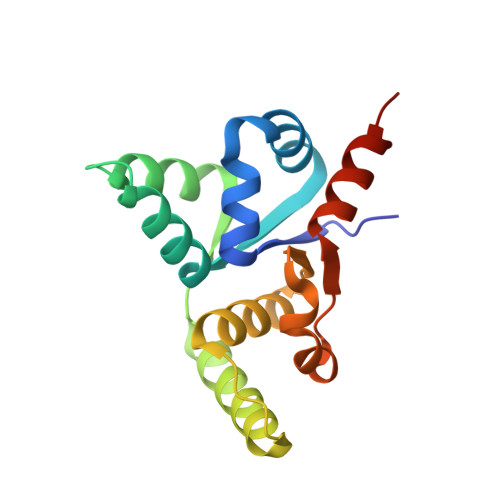Structure determination of contaminant proteins using the MarathonMR procedure
Hatti, K., Biswas, A., Chaudhary, S., Dadireddy, V., Sekar, K., Srinivasan, N., Murthy, M.R.N.(2017) J Struct Biol 197: 372-378
- PubMed: 28167161
- DOI: https://doi.org/10.1016/j.jsb.2017.01.005
- Primary Citation of Related Structures:
5H3L, 5H4F, 5H4G, 5H4H - PubMed Abstract:
In the recent decades, essential steps of protein structure determination such as phasing by multiple isomorphous replacement and multi wave length anomalous dispersion, molecular replacement, refinement of the structure determined and its validation have been fully automated. Several computer program suites that execute all these steps as a pipeline operation have been made available. In spite of these great advances, determination of a protein structure may turn out to be a challenging task for a variety of reasons. It might be difficult to obtain multiple isomorphous replacement or multi wave length anomalous dispersion data or the crystal may have defects such as twinning or pseudo translation. Apart from these usual difficulties, more frequent difficulties have been encountered in recent years because of the large number of projects handled by structural biologists. These new difficulties usually result from contamination of the protein of interest by other proteins or presence of proteins from pathogenic organisms that could withstand the antibiotics used to prevent bacterial contamination. It could also be a result of poor book keeping. Recently, we have developed a procedure called MarathonMR that has the power to resolve some of these problems automatically. In this communication, we describe how the MarathonMR was used to determine four different protein structures that had remained elusive for several years. We describe the plausible reasons for the difficulties encountered in determining these structures and point out that the method presented here could be a validation tool for protein structures deposited in the protein data bank.
Organizational Affiliation:
Molecular Biophysics Unit, Indian Institute of Science, Bengaluru, Karnataka 560012, India; Vittal Mallya Scientific Research Foundation, Kanakapura Road, Bengaluru, Karnataka 560062, India.















